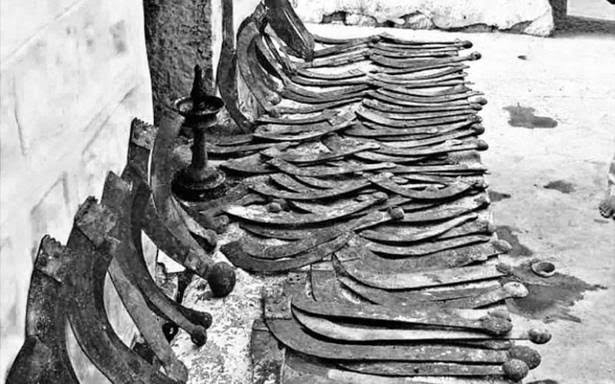Raja Raja Chola: The Great Monarch of South India
Raja Raja Chola I, often hailed as one of the greatest monarchs in Indian history, ruled the Chola dynasty from 985 to 1014 CE. His reign marked a golden era in South Indian history, characterized by extensive military conquests, remarkable architectural achievements, and flourishing trade and culture. This article delves into the life, achievements, and legacy of Raja Raja Chola I, shedding light on his enduring impact on South Indian history.
Raja Raja Chola I, born as Arulmozhi Varman, ascended to the Chola throne in 985 CE following the demise of his father, Parantaka Chola II. Despite facing challenges during his early reign, including internal dissent and external threats, Raja Raja Chola swiftly asserted his authority and embarked on a journey to expand the boundaries of the Chola empire.
---
Raja Raja Chola's military campaigns were instrumental in expanding the Chola empire to its zenith. He conducted numerous successful expeditions, conquering vast territories and subjugating rival kingdoms. His conquests extended across the length and breadth of South India, encompassing regions such as Tamil Nadu, Kerala, Karnataka, and parts of Sri Lanka. The naval prowess of the Chola navy under his reign enabled him to establish dominance over the Indian Ocean trade routes, further enhancing the prosperity of his kingdom.
One of the most enduring legacies of Raja Raja Chola I is his patronage of art and architecture. He commissioned the construction of several magnificent temples, the most famous among them being the Brihadeeswarar Temple in Thanjavur, also known as the Big Temple. Built in the Dravidian architectural style, the Brihadeeswarar Temple is a UNESCO World Heritage site and stands as a testament to the architectural brilliance of the Chola era. Its towering vimana (temple tower), intricate carvings, and colossal monolithic lingam are awe-inspiring manifestations of Raja Raja Chola's vision and grandeur.
In addition to his architectural endeavors, Raja Raja Chola was a devout patron of Hinduism and contributed significantly to the enrichment of religious and cultural practices. He made generous endowments to temples, supported the performance of elaborate rituals, and promoted the spread of Saivism, a sect of Hinduism dedicated to the worship of Lord Shiva. Under his reign, Tamil literature and poetry flourished, with several notable works emerging during this period, reflecting the cultural vibrancy of the Chola dynasty.
Raja Raja Chola I's reign left an indelible mark on South Indian history, shaping the political, cultural, and architectural landscape of the region for centuries to come. His military conquests consolidated the power of the Chola empire, establishing it as a formidable force in the Indian subcontinent. The architectural marvels built under his patronage continue to inspire awe and admiration, attracting tourists and scholars from around the world. Moreover, his enduring legacy as a visionary ruler and a patron of art and culture cements his place as one of the greatest monarchs in Indian history.
In conclusion, Raja Raja Chola I's reign represents a golden era in South Indian history, characterized by military prowess, architectural splendor, and cultural flourishing. His achievements as a ruler and a patron of art and religion continue to reverberate through the annals of history, immortalizing his legacy as one of the most illustrious monarchs of ancient India.








